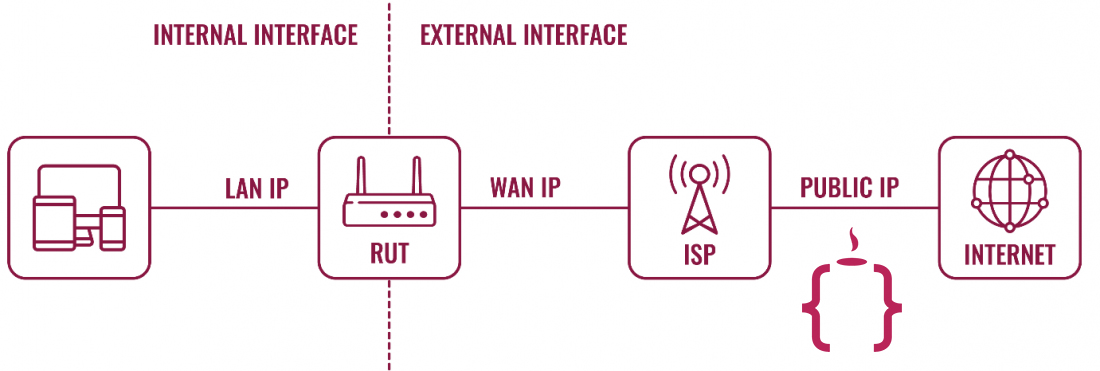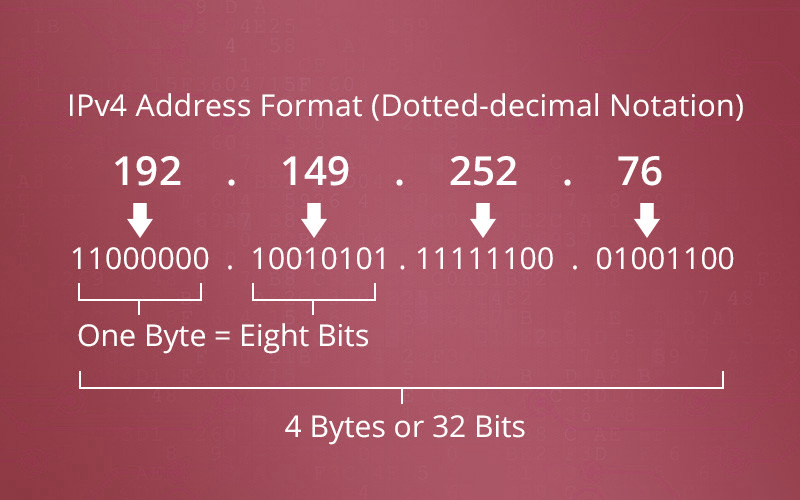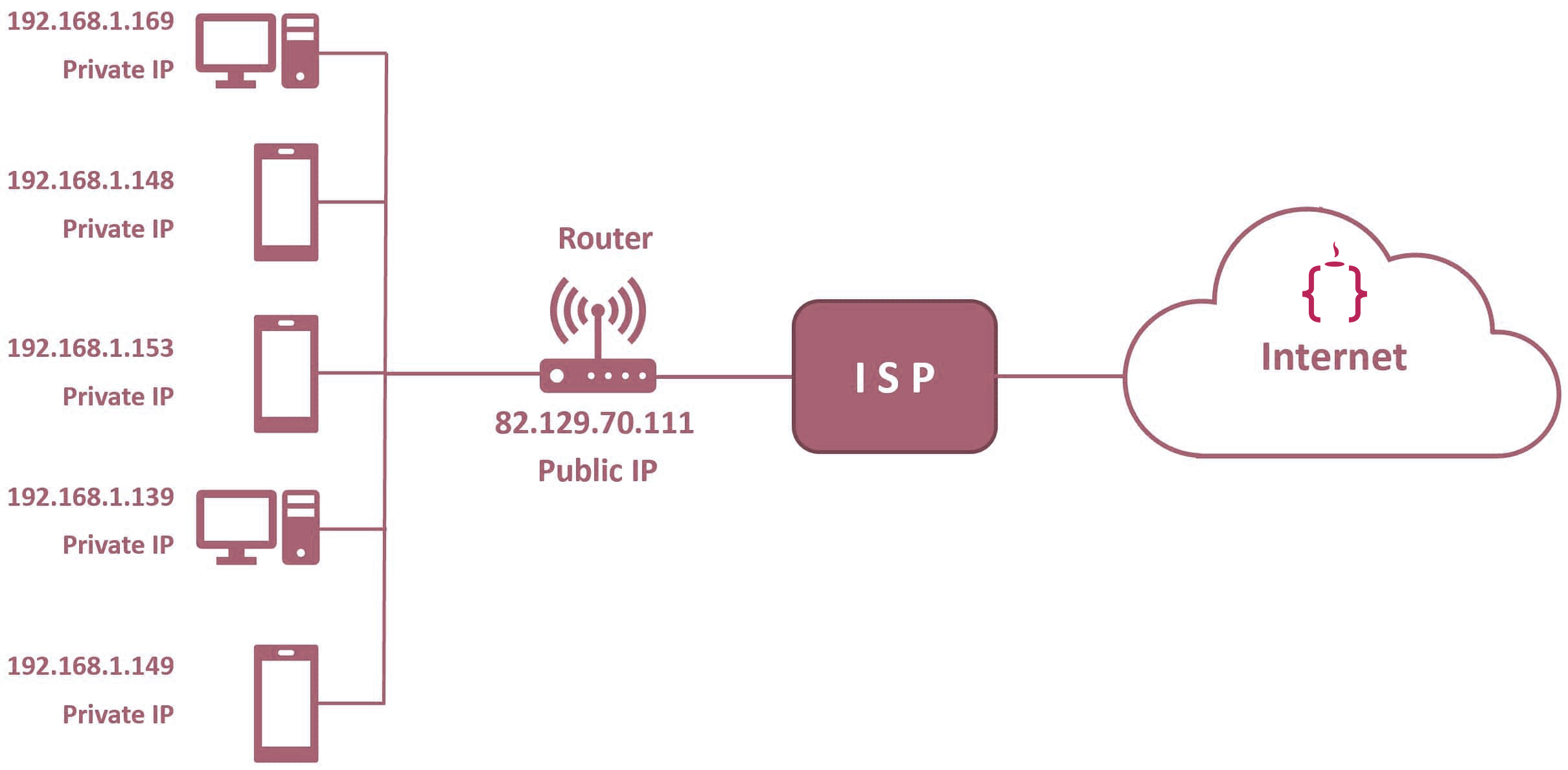
An IP address is nothing more than a 32-bit binary number, which is divided into 4 bytes.
For example, in the following IP address: 198.72.111.151, we can observe that it is composed of 4 numbers separated by dots, which is equivalent to: 11000110 10101000 01001000 01101111 10010111. We can easily verify this using online tools such as: What is my IP?
This byte conversion is called dotted decimal notation.
Now, we have the final IP address, which is composed of a network identifier and a host identifier, where a certain number of bits of the IP address belong to the Network identifier, and likewise, a certain number of bits belong to the Host identifier.
The amount assigned to either one varies depending on the class to which the address belongs. We will now see the classes for IPv4 (Internet Protocol Version 4):

1. Class A: Supports large networks on the Internet. The first 8 bits represent the network, and the remaining 24 bits represent the host.
2. Class B: Supports moderate networks on the Internet. The first 16 bits represent the network, and the remaining bits represent the host.
3. Class C: Supports small networks on the Internet. The first 24 bits represent the network, and the remaining 8 bits represent the host.
To determine the class of an IP address, we refer to the value of the first octet:
Class A: The first octet ranges from 0 to 127.
Class B: The first octet ranges from 128 to 191.
Class C: The first octet ranges from 192 to 223.
For example, the IP address 198.72.111.151 corresponds to Class C because its first octet is 198.
Every computer that has an Internet connection, typically established through an ISP (Internet Service Provider), is assigned a unique IP address that is unique worldwide. This IP address is easy to find out, and you don’t even need to access the router provided by your ISP. You can simply visit websites like ¿Which is my IP? to obtain your IP address.
For public IP addresses in IPv4, there are 4 billion available IP addresses through all possible combinations, as each number in the group of 4 (Example: 184.125.24.159) ranges from 0 to 255.
The public IP addresses are established in the Wide Area Network (WAN) unlike the private IP addresses that are within the Local Area Network (LAN) which is a topic we will cover in another blog. The private IP address is generally within the range: 192.168.1.(0 – 255)




 Ephemeral code
Ephemeral code